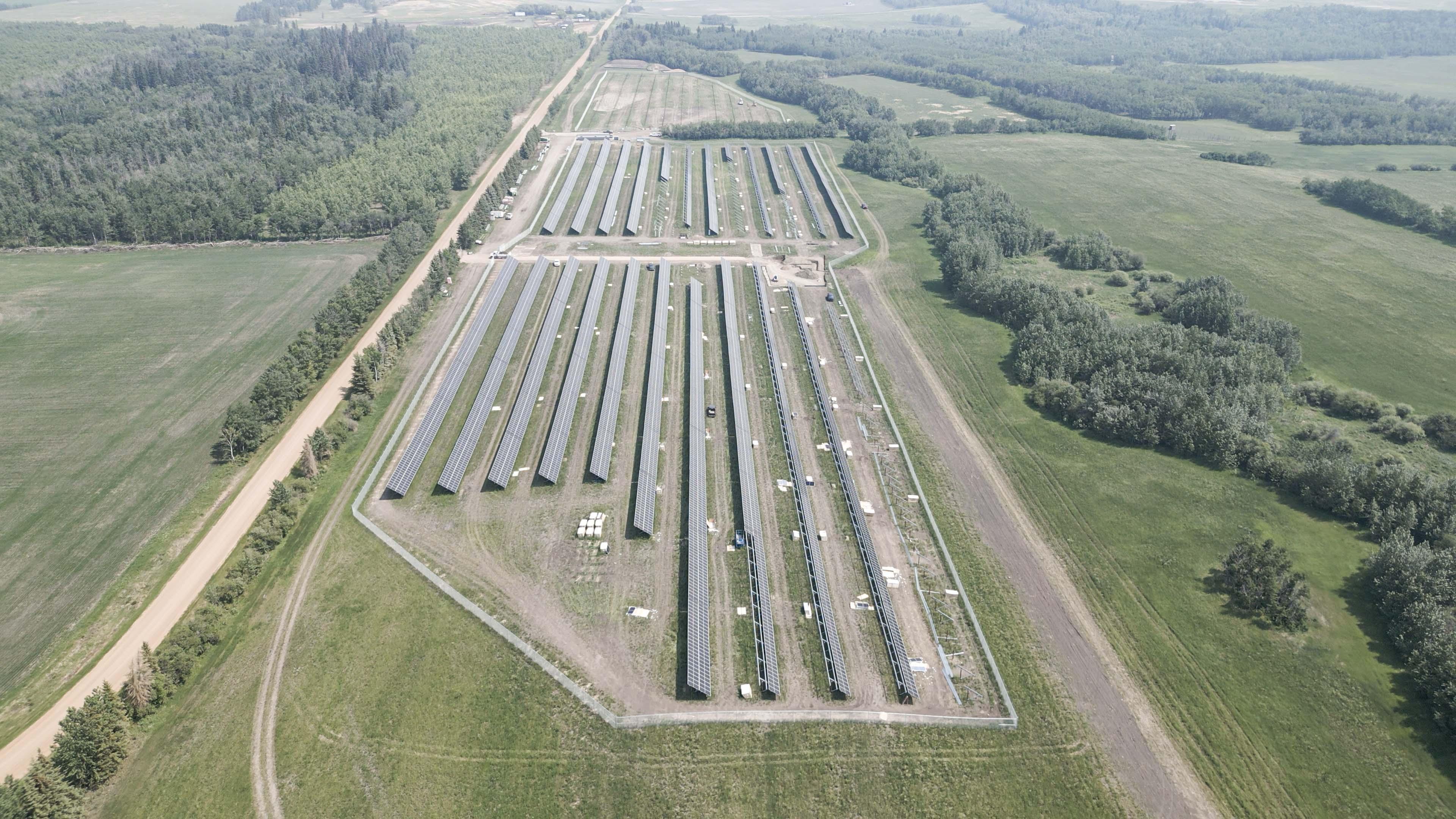A Gift from the Sun: The Métis Nation of Alberta’s solar project rises

By Hanneke Brooymans, BRC-Canada Senior Communications Lead
February 1, 2024
The solar project that now sits in tidy rows on Métis Crossing land 1.5 hours northeast of Edmonton grew out of a grassroots desire to address climate change and embrace the energy transition.
It was about training and job opportunities and finding a climate-friendly, new way to add funds to the Métis Nation of Alberta (MNA) coffers to provide more and better services to MNA Citizens.
That was the direction given to Andres Filella in 2017 when he surveyed Métis people living in 18 communities across Alberta. Filella, director of Environment and Climate Change for the MNA, asked them if they were seeing the effects of climate change, if they were concerned about it, and if so, what the MNA should do about it. (The MNA formed their own Indigenous government, complete with a cabinet, in October 2023.)
That was the start of a six-year journey that ended on November 30 last year, when the Métis Crossing Solar Project began operating, under the citizen-recommended name Salay Prayzaan, which is Michif for “gift from the sun.” It created jobs for the Métis people and is now also bringing in revenue for the MNA. (Construction was carried out by BRC-Canada gold participant ATCO.)
Initially, MNA solar efforts started with “baby steps,” or 37 microgeneration projects. But it wasn’t satisfying enough. “What we said is we really want to have a measurable impact,” Filella recalled. “We need to invest more time and resources and look at something bigger, and that's really where this came about.”
It was a steep learning curve, though, to develop their own solar large-scale solar project for the first time, Filella readily admits. And he’s keen to share lessons.
Location is key. Although solar productivity at their site is about 10 per cent less than it would be in southern Alberta, Filella says their exceptional neighbours made it very worthwhile. Both the Town of Smoky Lake and Smoky Lake County were very supportive of the project. In fact, the Town of Smoky Lake, in particular, comes out of this story looking a bit like Mr. Rogers.
As it turns out, it’s very challenging to secure funding for solar projects if you don’t happen to have a tonne of spare cash in the bank (we’re talking in the neighbourhood of $13 million). They tried financial institutions, they tried funding grants. But no luck.
The Town of Smoky Lake was watching this with concern. They liked the project proposal. They also knew there were funds available to them through the Municipal Climate Change Action Centre.
"What they said is, ‘We want to partner with you to make sure that that happens in our community,’” Filella recalls. “And so, they actually partnered with us to access that grant.”
Of course, the Town does get a portion of the revenue from the solar project, which they will stream to a community development fund. And the County will get significant municipal tax revenues every year. So, by being neighbourly and supportive, everyone benefits.
Filella learned a few other things along the way. A pre-feasibility, desk-top study is critical. This study is where you look at potential locations and how strong the resource is there (solar or wind) and whether the site has distribution and transmission infrastructure.
It would also flag whether or not there are big wildlife, environmental or archaeological risks to a project proceeding at that site. These are not things you want to get wrong because it could cause substantial increased costs, or wasted money and effort, further along in the project, he says.
He also credits Indigenous Clean Energy’s 20/20 Catalysts program with providing key training. This capacity-building program has equipped over 100 Indigenous community members and Indigenous governments and organizations' staff with tools and resources to become clean energy leaders.
Filella says the intense, three-week program shows participants how to engage with leadership, community, and municipalities. It also teaches you how to read financial statements, what types of environmental and technical studies will be needed, and what the equipment is like.
Filella also quickly learned that you need to rely on experts in the field. Several consultants came to be key players in the project.
And he came to understand that sometimes “grants” can come with a big price tag of their own. The MCCAC grant required them to retire environmental attributes. In other words, they could not sell the carbon offsets when they sold the power, so instead of having more attractive green power to sell, they were essentially just competing with regular power and are not able to sell to companies with sustainability goals. It will cost them quite a bit of profit. But the MNA didn’t have a choice that time. They needed the capital to move forward with the project.
Next time, though — and Filella thinks there will be a next time, though there are no timelines yet — the best plan may be to partner with a developer. And that will make finding the right partner the most important task, once again.
